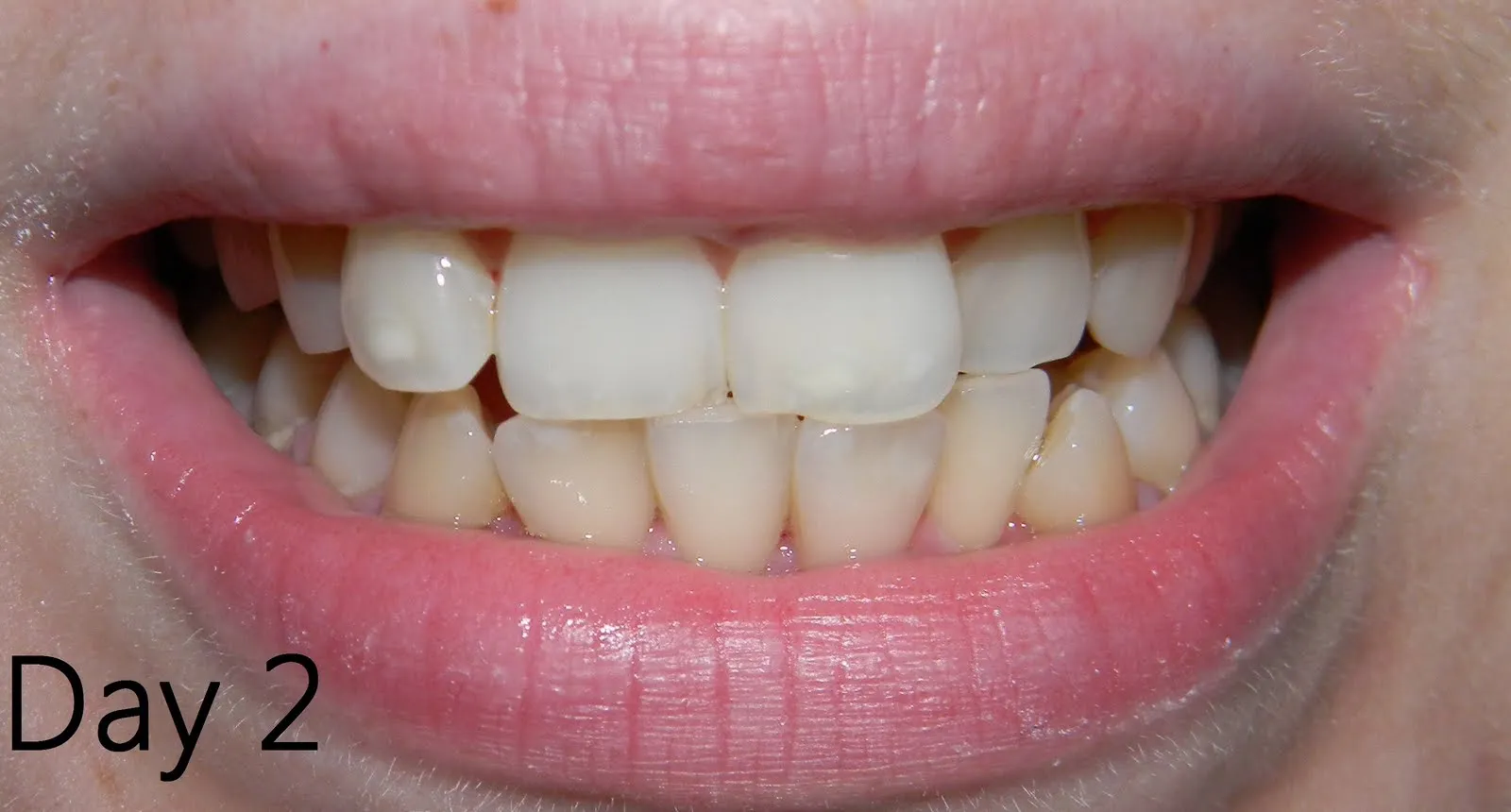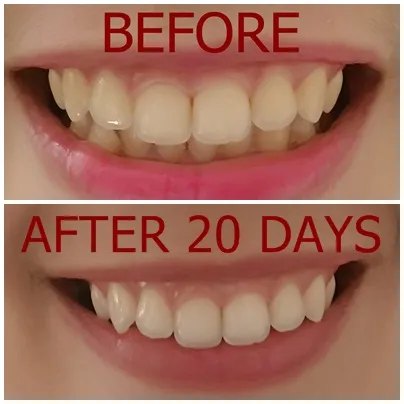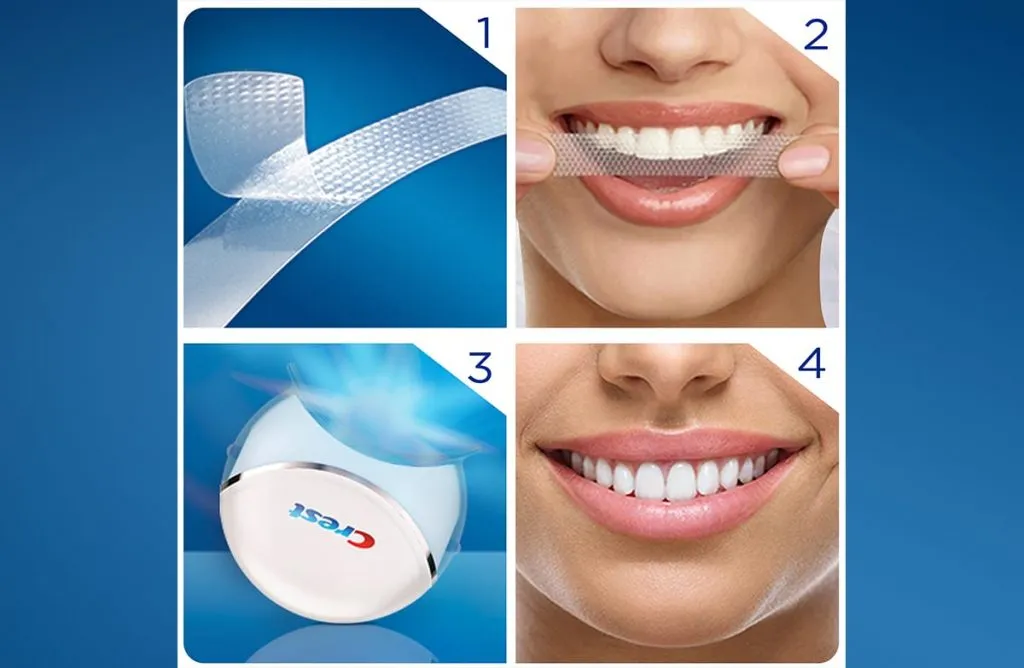Understanding Crest Whitening Strips
Crest Whitening Strips have revolutionized at-home teeth whitening, providing a convenient and effective way to brighten your smile. These thin, flexible strips are coated with a peroxide-based whitening agent, designed to adhere to your teeth and lift away stains. Understanding how these strips work is crucial for maximizing their benefits and minimizing potential side effects. This involves knowing the active ingredients, the mechanism of action, and the overall impact on your oral health.
How Crest Whitening Strips Work
Crest Whitening Strips utilize a chemical process to remove stains and discoloration from the enamel. The active ingredient, typically hydrogen peroxide or carbamide peroxide, penetrates the enamel and breaks down the stain molecules. As these molecules are broken down, they become less concentrated and appear less visible, resulting in a whiter smile. The strips are designed to provide a consistent and controlled release of the whitening agent, ensuring effective results without excessive exposure to the sensitive gum tissue.
The Active Ingredients in Crest Whitening Strips

The primary active ingredient in Crest Whitening Strips is hydrogen peroxide or carbamide peroxide. Hydrogen peroxide is a strong oxidizing agent that effectively breaks down stain molecules. Carbamide peroxide is a more stable form of peroxide that breaks down into hydrogen peroxide. The concentration of these ingredients varies depending on the product, with higher concentrations often leading to faster results but also potentially increasing sensitivity. The inactive ingredients serve to help the strip adhere to the teeth and provide a pleasant taste.
Top 5 Aftercare Tips for Crest Whitening Strips
Following the right aftercare routine can significantly enhance the effectiveness of Crest Whitening Strips and minimize potential side effects like tooth sensitivity. It’s about timing, technique, and the products you use. By being mindful of these aspects, you can maintain a bright, healthy smile while protecting your teeth. These tips cover the essential do’s and don’ts, helping you navigate the teeth whitening process effectively.
Tip 1 Wait before Brushing
One of the most crucial aftercare tips is to wait before brushing your teeth after using Crest Whitening Strips. Brushing immediately after can potentially remove the whitening agent before it has a chance to fully work. Moreover, the enamel may be slightly softened during the whitening process, making it more susceptible to abrasion. Allow at least 30 minutes after removing the strips before brushing. This gives your enamel time to re-harden, and the whitening agent time to fully penetrate the teeth.
Why Waiting is Important

Waiting before brushing is essential because it allows the active whitening ingredients to work optimally. The peroxide in the strips needs sufficient time to penetrate the enamel and break down the stains. Brushing too soon can disrupt this process and reduce the whitening effect. It also minimizes the risk of enamel erosion. This simple step can greatly improve the effectiveness of the whitening treatment.
The Science Behind Enamel Sensitivity
Tooth sensitivity can occur during teeth whitening due to the temporary changes in the enamel structure. The peroxide can cause the pores in the enamel to open, allowing the whitening agent to reach the dentin, the layer beneath the enamel that contains nerve endings. This can lead to sensitivity to hot and cold foods and drinks. Waiting before brushing helps mitigate this sensitivity by allowing the enamel to remineralize and reducing the risk of irritation.
Tip 2 Gentle Brushing Techniques
When you do brush your teeth after the waiting period, use a gentle technique. Avoid applying too much pressure, which can erode the enamel and cause sensitivity. Instead, use small, circular motions to clean each tooth thoroughly. Brushing too aggressively can also irritate the gums, which could lead to further discomfort. Focus on cleaning your teeth carefully, not forcefully.
Choosing the Right Toothbrush

The type of toothbrush you use plays a significant role in gentle brushing. Choose a toothbrush with soft bristles, as they are gentler on the enamel and gums. Hard bristles can be abrasive and can cause damage, especially when used after teeth whitening. Look for toothbrushes specifically labeled as ‘soft’ or ’extra soft’. Changing your toothbrush every three months, or sooner if the bristles become frayed, will help maintain optimal hygiene and gentle cleaning.
The Importance of Soft Bristles
Soft bristles help prevent enamel erosion and gum irritation. They are effective at removing plaque and debris without the risk of damaging the tooth surface. Soft bristles conform to the contours of your teeth, ensuring a thorough cleaning. Using soft bristles is a small but significant step in maintaining oral health, especially after using teeth whitening products. It minimizes the risk of sensitivity and ensures a comfortable brushing experience.
Tip 3 Choosing the Right Toothpaste
The toothpaste you use can either help or hinder the whitening process and the health of your teeth. Choosing the right toothpaste is essential for aftercare. Avoid abrasive toothpastes that can damage the enamel, especially after using whitening strips. Instead, opt for toothpastes that are designed for sensitive teeth or contain ingredients that support enamel health.
Avoid Abrasive Toothpastes

Abrasive toothpastes contain particles that physically scrub away stains, which can also wear away the enamel. After using whitening strips, the enamel may be slightly more vulnerable, making it more susceptible to damage from these abrasive agents. Look for toothpastes with low Relative Dentin Abrasivity (RDA) values, which indicate lower abrasiveness. Avoid toothpastes that are marketed for heavy stain removal as they are often more abrasive.
Recommended Toothpaste Ingredients
Choose toothpaste with ingredients that promote enamel health and help with sensitivity. Fluoride is a key ingredient that strengthens enamel and protects against cavities. Potassium nitrate is a common ingredient in toothpastes for sensitive teeth, as it helps to block the nerve endings that cause sensitivity. Some toothpastes contain ingredients like hydroxyapatite, which remineralizes the enamel. Consider these ingredients when selecting a toothpaste to use after whitening.
Tip 4 What to Eat and Drink
Your diet plays a role in how long your whitening results last. Some foods and drinks can stain your teeth and diminish the effects of the whitening strips. Being mindful of what you consume after using Crest Whitening Strips can help maintain your brighter smile. Avoiding staining agents will prevent your teeth from re-staining soon after treatment.
Foods and Drinks to Avoid

Certain foods and drinks are notorious for staining teeth. Coffee, tea, red wine, and dark sodas are major culprits. Beets, berries, and curries can also stain your teeth. Minimize your consumption of these items, especially in the hours immediately following your whitening treatment. If you do consume these, rinse your mouth with water afterward to reduce staining.
Foods and Drinks That Are Safe
Choose foods and drinks that are less likely to stain. Water is always a safe choice. Dairy products like milk and yogurt can help protect your teeth because they contain calcium. White or clear foods like chicken, rice, and cauliflower are less likely to stain. Enjoy these options in moderation to protect your newly whitened teeth.
Tip 5 Maintaining Results
Maintaining your results requires ongoing care and attention. Regular dental checkups and professional cleanings are important. You can also use other teeth whitening options to maintain the effects. Be consistent with your oral hygiene routine, avoid staining foods and drinks, and follow the recommendations from your dentist for the best results.
Regular Dental Checkups
Regular dental checkups are essential for maintaining your oral health and the results of your teeth whitening. Your dentist can assess your teeth, remove any surface stains, and provide professional cleaning. They can also provide advice tailored to your specific needs and address any potential issues. Dental checkups should be performed every six months.
Other Whitening Options
To maintain a bright smile, consider other teeth whitening options. At-home whitening kits with custom trays provide consistent results. Professional whitening treatments, performed by a dentist, offer the most dramatic results. Over-the-counter whitening products like whitening toothpaste can also help. Discuss these options with your dentist to determine the best approach for you.
Conclusion
Following these aftercare tips will help you maximize the benefits of Crest Whitening Strips while protecting your teeth. Waiting before brushing, using gentle techniques, choosing the right products, and being mindful of your diet are all important. By incorporating these practices into your routine, you can achieve a brighter, healthier smile and maintain it for the long term. Remember to consult your dentist for personalized advice and regular checkups to ensure optimal oral health.
